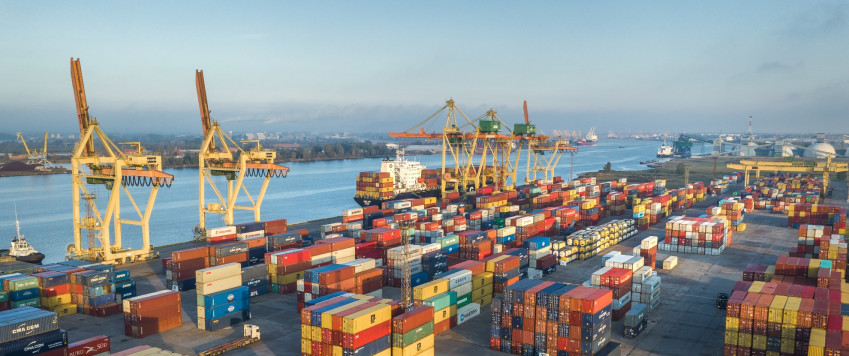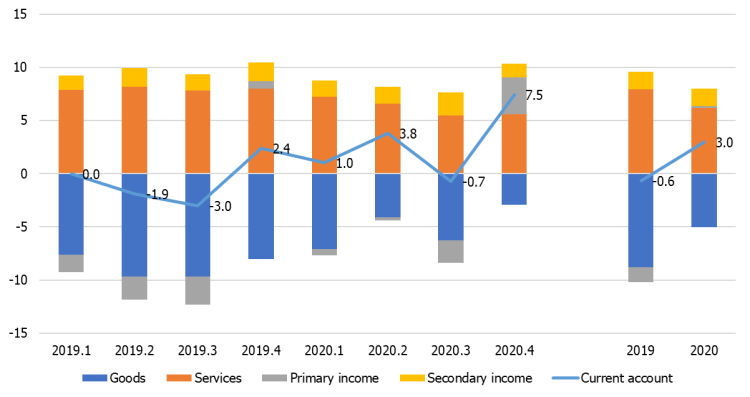The balance of payments reveals that economic sectors have fared differently during the global health crisis

In the fourth quarter of 2020, recovery in the global economic activity facilitated further growth in Latvia's exports of goods. Meanwhile, with further intermittent tightening of restrictions on movement and gathering, services exports continued to stagnate.
Despite the pandemic, Latvia was able to expand its overall exports of goods in 2020. Future growth, however, is unlikely to be as dynamic in light of supply issues and limited prospects of further production volume increases from their record highs. Further setbacks in cross-border economic activity may occur either due to administrative restrictions or infection outbreaks.
Both in the crisis and during the recovery phase, Latvia's exports of goods was supported both by Latvia's trade partners, which have seen their economies develop more successfully against the backdrop of the rest of Europe, and manufacturing of products which have enjoyed more resilient demand during the pandemic.
On account of the record-high grain harvest in 2020, complemented by stronger demand and rising prices, Latvia's exports of goods also continued to expand in the fourth quarter of 2020. Exports of machinery and electrical equipment continued surging, and exports of wood benefited from higher demand and prices in the last quarter of the year.
The value of exports of goods grew by 14.5% in the fourth quarter of 2020 and exceeded the value of 2019 by 4.3% in 2020 overall.
Services exports reveal a very different picture: in the fourth quarter of 2020, services exports saw a very modest recovery from the deep fall in activity observed in the second quarter and lagged behind the level of the last quarter of 2019 by more than one fifth. Exports of travel services, which were hit most severely, could only reach one fourth of the previous year's level due to movement restrictions and cautious approach to leisure and business trips.
Some recovery could be observed in exports of transport services, with the exception of air transport services. Meanwhile, demand for other services, i.e. business services, telecommunications services as well as computer and information services, even expanded during the pandemic.
With the surge in exports of goods significantly exceeding the gradual recovery in imports, the overall goods and services trade balance increased to 2.7% of GDP in the fourth quarter of 2020. Along with the income account surplus of 4.8% of GDP, the current account posted a surplus of 7.5% of GDP in the fourth quarter of 2020.
Chart. Main components of the current account (% of GDP)

The income account dynamics were underpinned by the primary income account which increased in the fourth quarter of 2020 on account of the disbursement of European Union subsidies to farmers. With the pandemic developments weighing on investors' profits, the surplus also increased due to a lower amount of foreign investor dividends in Latvia on the debit side of the primary income account.
In the fourth quarter of 2020, the largest flows in the financial account were related to Latvijas Banka's participation in Eurosystem monetary policy operations and a decline in the government debt securities outstanding. Inflows of funds continued in Latvia in the form of direct investment (2.2% of GDP) as new capital and reinvested earnings.
Textual error
«… …»


